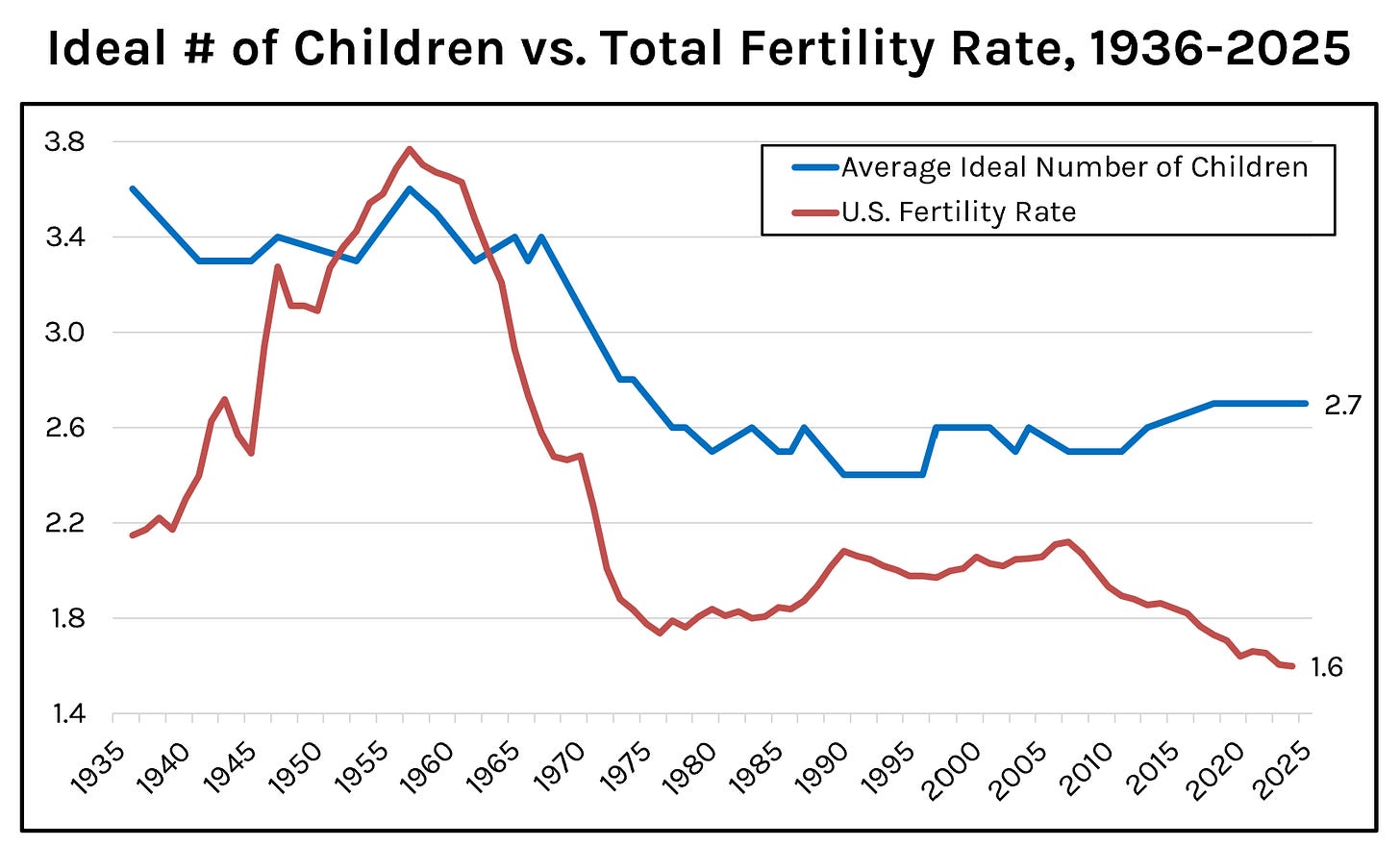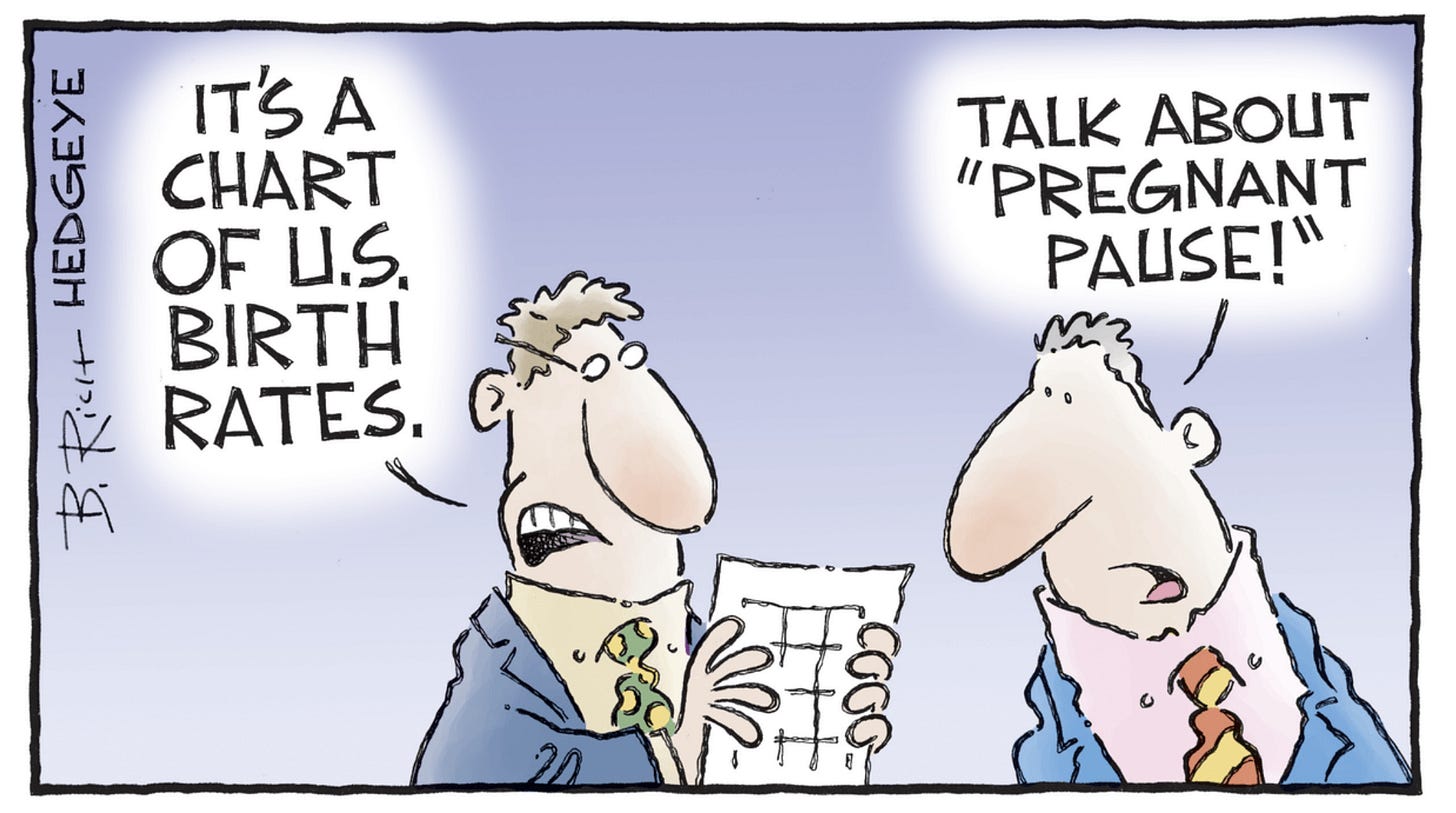Americans want more children than at any time since the 1970s, yet they’re having far fewer. Financial constraints are widening the aspiration gap.
Since 1936, Gallup has asked Americans how many children they consider ideal. This summer, the answer reached 2.7, the highest in 50 years. But in reality, Americans are having far fewer children: The total fertility rate is just 1.6. That’s a record 1.1-child shortfall between aspiration and reality.

Historically, ideal family size and the fertility rate don’t move in lockstep, and since the GFC, they’ve sharply diverged. NORC’s General Social Survey shows the same long-term decoupling (see “Demography Roundup 9/23”). And our own analysis has tracked the growing shortfall by birth cohort (see “Births Keep Falling, But Americans Still Want the Same Number of Kids”).
We’ve long argued that declining birthrates aren’t about Americans wanting fewer kids, but about Americans feeling less able to have them. According to the 2025 American Family Survey, 43% of respondents said insufficient money played a role in limiting their family size. Only 22% cited a lack of personal desire.

Moreover, the perceived affordability gap keeps widening. In 2015, 51% of US adults disagreed with the statement that “the cost of raising children is affordable for most people.” Today, that share has risen +20 percentage points to 71%.





